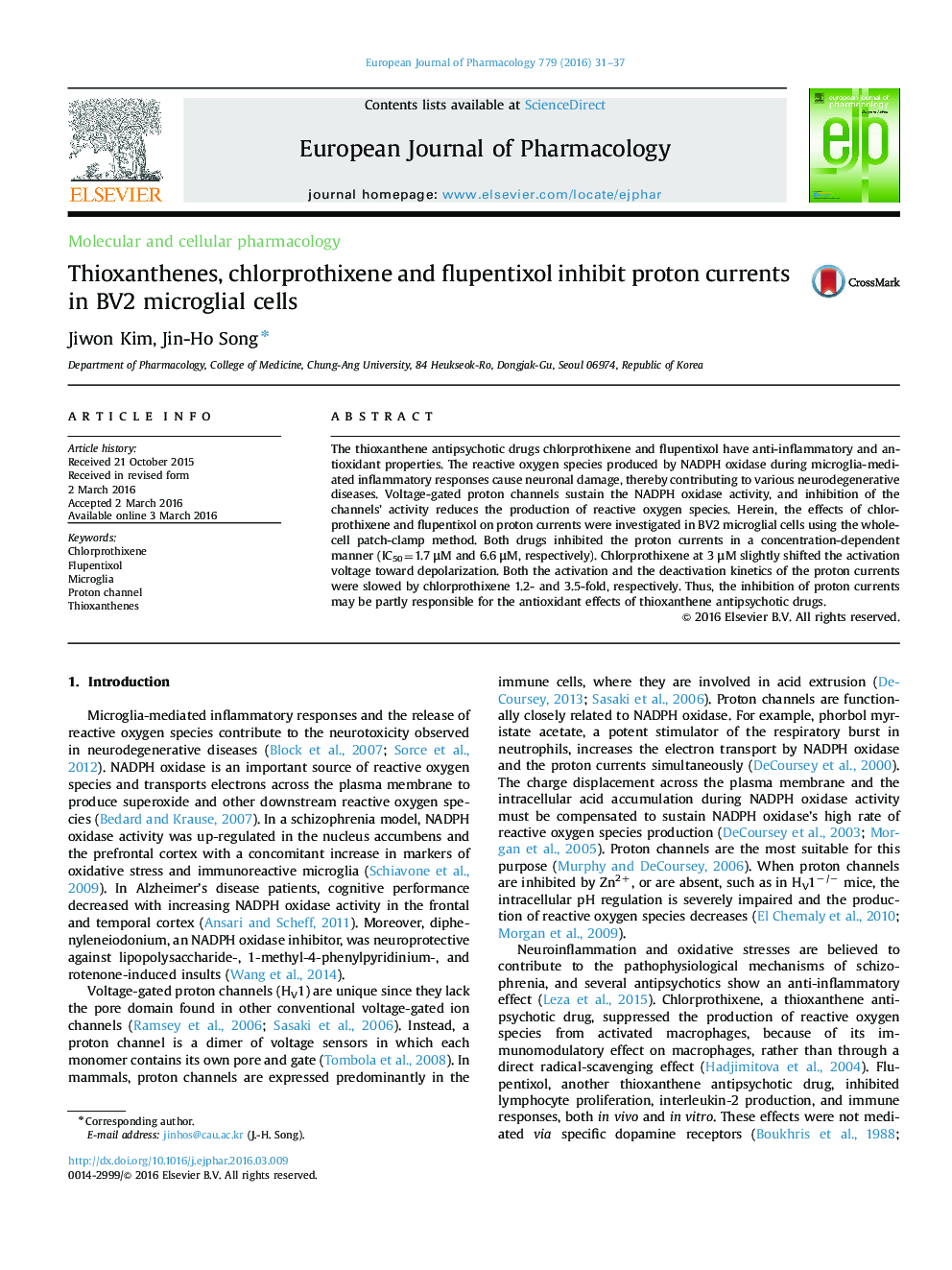| کد مقاله | کد نشریه | سال انتشار | مقاله انگلیسی | نسخه تمام متن |
|---|---|---|---|---|
| 5826773 | 1558901 | 2016 | 7 صفحه PDF | دانلود رایگان |
عنوان انگلیسی مقاله ISI
Thioxanthenes, chlorprothixene and flupentixol inhibit proton currents in BV2 microglial cells
دانلود مقاله + سفارش ترجمه
دانلود مقاله ISI انگلیسی
رایگان برای ایرانیان
کلمات کلیدی
موضوعات مرتبط
علوم زیستی و بیوفناوری
علم عصب شناسی
علوم اعصاب سلولی و مولکولی
پیش نمایش صفحه اول مقاله

چکیده انگلیسی
The thioxanthene antipsychotic drugs chlorprothixene and flupentixol have anti-inflammatory and antioxidant properties. The reactive oxygen species produced by NADPH oxidase during microglia-mediated inflammatory responses cause neuronal damage, thereby contributing to various neurodegenerative diseases. Voltage-gated proton channels sustain the NADPH oxidase activity, and inhibition of the channels' activity reduces the production of reactive oxygen species. Herein, the effects of chlorprothixene and flupentixol on proton currents were investigated in BV2 microglial cells using the whole-cell patch-clamp method. Both drugs inhibited the proton currents in a concentration-dependent manner (IC50=1.7 μM and 6.6 μM, respectively). Chlorprothixene at 3 μM slightly shifted the activation voltage toward depolarization. Both the activation and the deactivation kinetics of the proton currents were slowed by chlorprothixene 1.2- and 3.5-fold, respectively. Thus, the inhibition of proton currents may be partly responsible for the antioxidant effects of thioxanthene antipsychotic drugs.
ناشر
Database: Elsevier - ScienceDirect (ساینس دایرکت)
Journal: European Journal of Pharmacology - Volume 779, 15 May 2016, Pages 31-37
Journal: European Journal of Pharmacology - Volume 779, 15 May 2016, Pages 31-37
نویسندگان
Jiwon Kim, Jin-Ho Song,